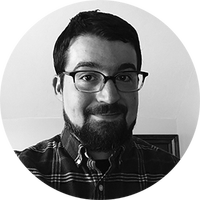How Wes Anderson sneaks stop-motion animation into every film he makes
Wes Anderson doesn't want to be a filmmaker. He wants to be an animator.


Maybe Wes Anderson never wanted to be a filmmaker. Maybe he only ever wanted to be an animator.
Granted, the famous director only just released his second animated movie, Isle of Dogs, last week. And it came nine years after his first one, Fantastic Mr. Fox.
But still: There's something about Anderson's oeuvre, even his live-action films, that has always seemed animated.
The Week
Escape your echo chamber. Get the facts behind the news, plus analysis from multiple perspectives.

Sign up for The Week's Free Newsletters
From our morning news briefing to a weekly Good News Newsletter, get the best of The Week delivered directly to your inbox.
From our morning news briefing to a weekly Good News Newsletter, get the best of The Week delivered directly to your inbox.
In fact, both Isle of Dogs and Fantastic Mr. Fox are largely in keeping with the rest of his body of work; like The Royal Tenenbaums, The Life Aquatic with Steve Zissou, and Moonrise Kingdom, they're deadpan family dramas about fractured homes and displaced children. The only difference is that those motifs are played out with anthropomorphized animal puppets and filtered through a stop-motion lens, rather than with actual human beings.
It's not as meaningful a difference as it sounds.
In stop-motion animation, objects captured by the camera are moved gradually, inch-by-inch, to suggest movement. And that goes not just for characters but for scenery, too; every leaf that waves in a wispy breeze is the result of several nearly-identical frames being edited together in a painstaking process. If you watch the stop-motion films produced by institutions like the Laika studio (Coraline and The Corpse Bride) or Aardman Animations (Wallace and Gromit), you'll see their work is all about the minutiae and manipulating even the smallest design elements.
And Anderson, no matter if he's working in stop-motion or live-action, is positively obsessed with minutiae. He loves all the tiny components of mise en scène that seem trifling in a vacuum. He's in utmost control over every bit of visual information that appears in each frame. And like an animator, he'll often use his total mastery over the frame to exaggerate affects, lending even his live-action films a cartoonish quality.
A free daily email with the biggest news stories of the day – and the best features from TheWeek.com
This is most evident in his recent efforts, like The Grand Budapest Hotel (2014) and Moonrise Kingdom (2012), but it's true even for 2004's The Life Aquatic and 2001's The Royal Tenenbaums. Take this scene from the latter, where Owen Wilson's macho mescaline addict Eli Cash crashes his car. It's impossible to watch without seeing Cash's exaggerated facial expressions and impending doom as cartoonish:
Much like Wile E. Coyote chasing after the Road Runner, this is a sequence about using velocity for comic effect. Kids and dogs in danger isn't funny, per se, but the buildup is — and so is the payoff moments later, when the car blows through a mailbox and scatters letters across the sidewalk.
Not all of Anderson's exaggerations are comedic though. Three years after Tenenbaums, Anderson served up The Life Aquatic — a film that reaches its climax deep beneath the ocean. In an unexpectedly dazzling moment toward the movie's end, the main cast packs into a submersible and goes to confront the "jaguar shark," the beast that killed the main protagonist's best friend. The vicious shark is heralded by a scintillating rush of neon pink fish:
The shark itself, meanwhile, possesses a certain jaw-dropping, deadly beauty all its own:
In these cases, Anderson used live-action overlaid with vivid animated elements to amplify the live-action material. The scale of the shark and the eye-popping color of the fish underscore the already semi-absurd plot of the film: an oceanographer seeking revenge on the shark that killed his buddy. But because the shark is literally a cartoon, the film's melodramatic underpinnings don't feel quite so overwrought; sure, the characters might be hams, but at least they aren't massive animated sharks.
After The Life Aquatic came Moonrise Kingdom — Anderson's first post-Fantastic Mr. Fox film — and with it an increase in the contrast between real-world dilemmas and whimsical mise en scène. We see this right away in the Khaki Scout tree house, which looks like something right out of Looney Tunes or perhaps a Studio Ghibli picture:
That faux-fantastical aesthetic continues when runaways Sam and Suzy run afoul of Sam's fellow Khaki Scouts, and arrows start flying:
And again when, toward the end of the film, Captain Sharp saves Sam and Suzy from certain death at the top of a church steeple in a lightning storm:
Notice the staging, composition, and movement. In each scene, Anderson took what could've been a simple shot and made it vastly more complicated: Another movie might have shown the Khaki Scouts shooting the arrow, or Suzy stabbing the Scouts' leader with her scissors, but instead Anderson cuts together a shot of the scissors and the arrow in flight, ducking traditional presentations. He captures Sharp, Sam, and Suzy in silhouette when he could've just shot them from overhead; he has Tilda Swinton, Edward Norton, Frances McDormand, and Bill Murray stuffed into a single window like gawking stooges. Anderson always finds ways to magnify the absurdity of his visual aesthetic, even when he's confined to working with real, live humans.
The Grand Budapest Hotel (2014) expands even further on this concept. Taking us back to Looney Tunes and Merrie Melodies, Gustave's near-fatal encounter with the thuggish Jopling resembles any number of times poor Wile E. found himself tumbling over a cliffside:
The film's iconic ski chase, meanwhile, was constructed primarily using tiny puppets on sets of fake trees and snow. It's telling that Anderson forewent other methods of filming the scene and headed straight for miniatures; he could have hired stuntmen, mounted cameras on snowmobiles, and moved the camera, but instead he held tight to his static shots of the action, using puppetry offset with close reaction shots of Ralph Fiennes', Tony Revolori's, and Willem Dafoe's faces to get as close to stop-motion as he could without just using it outright. Besides, Fiennes, Dafoe, and Revolori may be perfectly good skiers, but they probably wouldn't have been capable of pulling this off:
Maybe that's why Anderson settled on Isle of Dogs as his ninth feature. Fully immersed in animation as his medium, he gets to revel in the minutiae for as long as he wants, manipulating every scene to his liking. The film aches and delights, and its presentation grounds its zaniest characteristics: talking dogs, a pro-cat bureaucracy, trash-strewn wastelands, and abundant homage to the great Japanese filmmaker Akira Kurosawa.
It's as if Anderson feels somehow less restrained working in a process that demands discipline and patience. He's accustomed to these criteria, after all. He's applied them to each live-action movie he's ever made.
Bostonian culture journalist Andy Crump covers the movies, beer, music, and being a dad for way too many outlets, perhaps even yours: Paste Magazine, The Playlist, Mic, The Week, Hop Culture, and Inverse, plus others. You can follow him on Twitter and find his collected writing at his personal blog. He is composed of roughly 65 percent craft beer.
-
 Zimbabwe’s driving crisis
Zimbabwe’s driving crisisUnder the Radar Southern African nation is experiencing a ‘public health disaster’ with one of the highest road fatality rates in the world
-
 The Mint’s 250th anniversary coins face a whitewashing controversy
The Mint’s 250th anniversary coins face a whitewashing controversyThe Explainer The designs omitted several notable moments for civil rights and women’s rights
-
 ‘If regulators nix the rail merger, supply chain inefficiency will persist’
‘If regulators nix the rail merger, supply chain inefficiency will persist’Instant Opinion Opinion, comment and editorials of the day
-
 Walter Isaacson's 'Elon Musk' can 'scarcely contain its subject'
Walter Isaacson's 'Elon Musk' can 'scarcely contain its subject'The latest biography on the elusive tech mogul is causing a stir among critics
-
 Welcome to the new TheWeek.com!
Welcome to the new TheWeek.com!The Explainer Please allow us to reintroduce ourselves
-
 The Oscars finale was a heartless disaster
The Oscars finale was a heartless disasterThe Explainer A calculated attempt at emotional manipulation goes very wrong
-
 Most awkward awards show ever?
Most awkward awards show ever?The Explainer The best, worst, and most shocking moments from a chaotic Golden Globes
-
 The possible silver lining to the Warner Bros. deal
The possible silver lining to the Warner Bros. dealThe Explainer Could what's terrible for theaters be good for creators?
-
 Jeffrey Wright is the new 'narrator voice'
Jeffrey Wright is the new 'narrator voice'The Explainer Move over, Sam Elliott and Morgan Freeman
-
 This week's literary events are the biggest award shows of 2020
This week's literary events are the biggest award shows of 2020feature So long, Oscar. Hello, Booker.
-
 What She Dies Tomorrow can teach us about our unshakable obsession with mortality
What She Dies Tomorrow can teach us about our unshakable obsession with mortalityThe Explainer This film isn't about the pandemic. But it can help viewers confront their fears about death.
